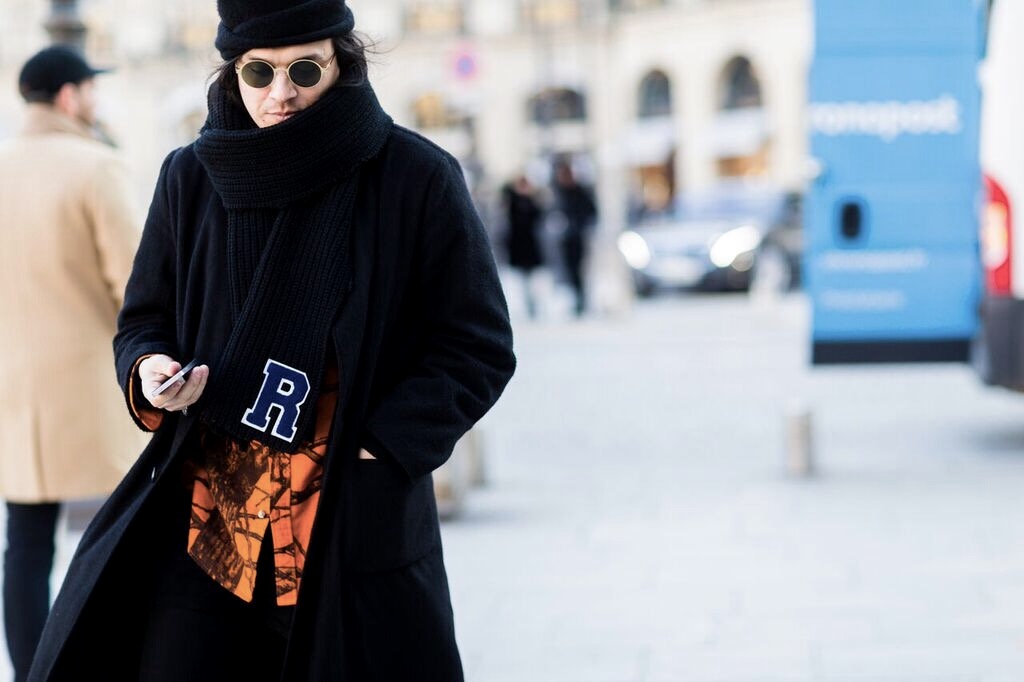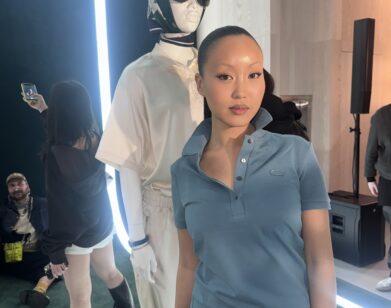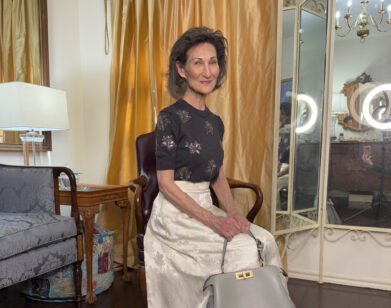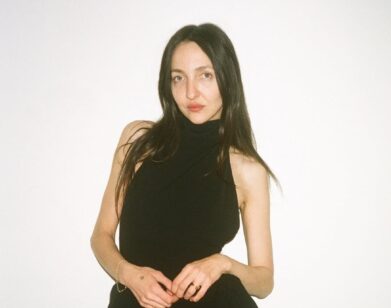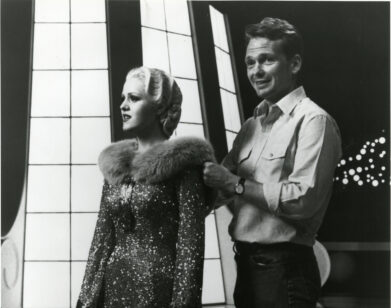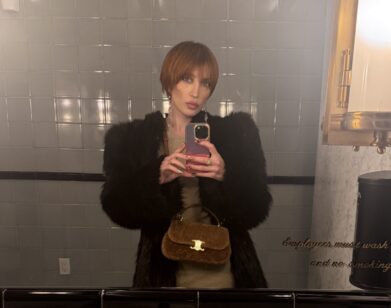Why streetwear die-hards are snapping up Guillermo Andrade’s 424
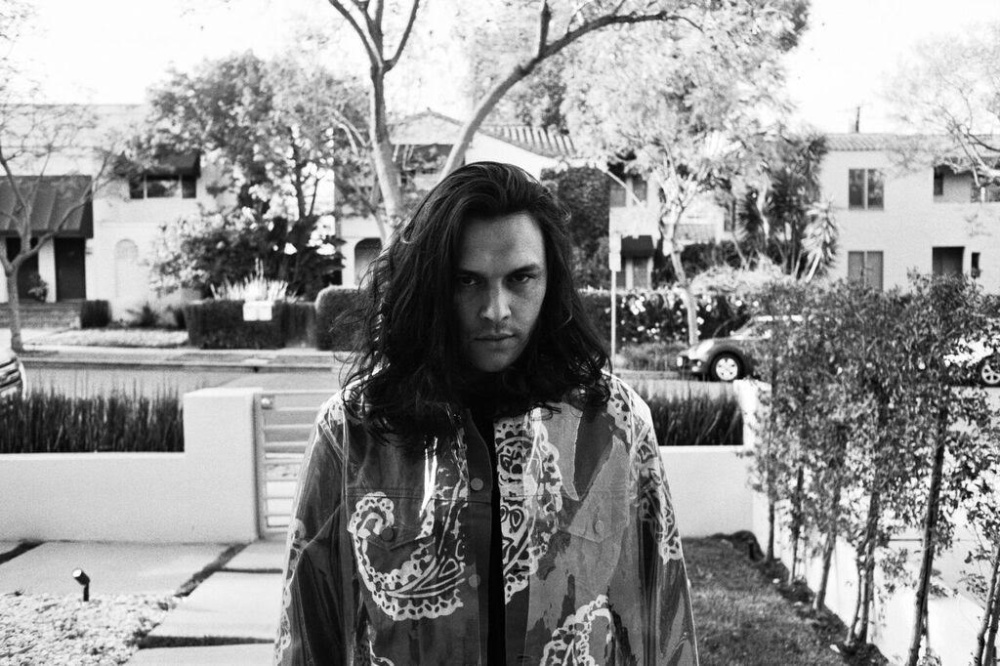
Though many have argued streetwear has reached peak saturation, there are still innovators debunking that claim. With his own brand and an L.A. streetwear Mecca, Guillermo Andrade is one of them. As he believes, the more in the casual luxury sphere, the merrier.
Andrade, 33, is behind the concept store FourTwoFour on Fairfax, created to showcase young, emerging talent. He came to the States as an undocumented immigrant from Guatemala and in 2010 he opened his shop, which sells pieces from several streetwear designers from names like Alexander Wang and Rick Owens to rising brands like MISBHV and Fear of God, allowing them to share their work with more consumers. He then launched his own streetwear line, 424, in 2014. Since then, Andrade has released full collections including staples like hoodies and T-shirts.
Before Andrade was a fashion insider, he was a DIY-er, ordering Paul Smith blazers online and safety-pinning them together, or putting cuff links on his sneakers (the birth of Sneaker Crowns) instead of at the edge of a blazer.
424 has continued to build momentum—Andrade was recently tapped by Barney’s to design an exclusive 424 capsule collection for the store, along with the store carrying the AW17 collection and even designed a few pieces for The Weeknd’s upcoming tour—and counts Kendrick Lamar and Kylie Jenner as fans of the brand. Whether it’s a graphic T-shirt or one of 424’s iconic red armband denim jackets that were created as part of a collection to protest police brutality, Andrade has his finger planted firmly on the pulse.
AUSTEN TOSONE: [shuffling papers] I just want to make sure I’m all organized. I’m a Virgo.
GUILLERMO ANDRADE: Me too! I’m probably the least organized Virgo you’ve ever met. Well actually, organized chaos is where I live. That middle space between completely organized and “what a mess”—I’m in the middle, for sure.
TOSONE: When did you first get into design?
ANDRADE: I guess it started a long time ago because of graffiti, because of the culture behind it … It was always cool to wear something that nobody else was wearing. So we were writing on our clothes or putting patches on them and trying to stitch it, going online and finding oversized Paul Smith blazers, and then by hand just putting safety pins somewhere. It still fit me, but I didn’t have to pay $500. As a profession, when I realized, “Oh shit, this is going to be a real thing,” I think that came after I started to help other people. I created my platform that started to help people get into fashion. I was just trying to create energy around a product. And then it’s impossible to be in it and not have it rub off on you.
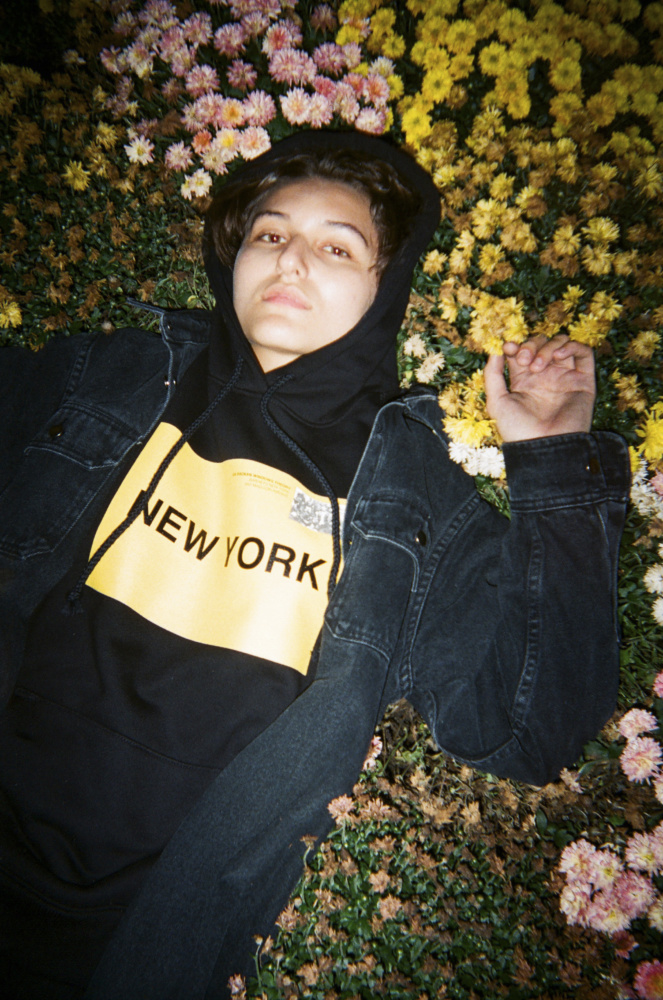
TOSONE: How was The Drop @ Barney’s?
ANDRADE: Great! I like to show up, man. I like to talk to as many people as possible—staff, kids, buyers, random strangers. I like to interact. It’s the most fun part, honestly.
TOSONE: What’s the idea behind the pieces in this capsule collection?
ANDRADE: I try to always create one piece that I can give a personal attachment to instead of having to develop completely new patterns as an exclusive for a store—creating a template where we can plug in names and images and concepts makes it easy to do collaborations. It becomes a special, unique thing that’s only available through that retailer, and its brand identity too, so it’s super cool. They get a piece of it that’s only theirs, but overall, it’s still our story.
TOSONE: Since you’re L.A.-based, what was it like designing for Barney’s, a brand that so closely identifies with New York?
ANDRADE: When I moved to the states all of the stuff that I learned about the culture that I started to really like in New York was from so far away, I saw it in magazines. I started learning and speaking English, listening to Wu-Tang 18 years ago and stuff like that. For me, the quintessential cool was always New York. As much as I am a Cali person, New York has always been at the soul of all of the things I thought were cool.
TOSONE: What are the things about New York that you found particularly cool?
ANDRADE: Hip-hop, man! Rap, you know? The energy and the attitude of being philosophical and sophisticated, when you grew up around crack houses … That to me, from afar, was like “Oh, wow.”
TOSONE: Where did Sneaker Crowns come from? They’re so unique to your brand.
ANDRADE: That, I actually have a design patent for, which is sick. Okay, so I was obsessed with sneakers, and I bought a pair of Nike SB’s and they came in a full package. There were low top SB’s and they came with a button up and a blazer, all with the same white and purple pinstripe pattern, and then there were cuff links. I was like, “What the fuck are these things? They’re sick.” I didn’t want them on my blazer so I took a razor, I cut up my shoes and I just popped them in, cause I just wanted my shoes to be even more fresh and even more rare than anybody else’s.
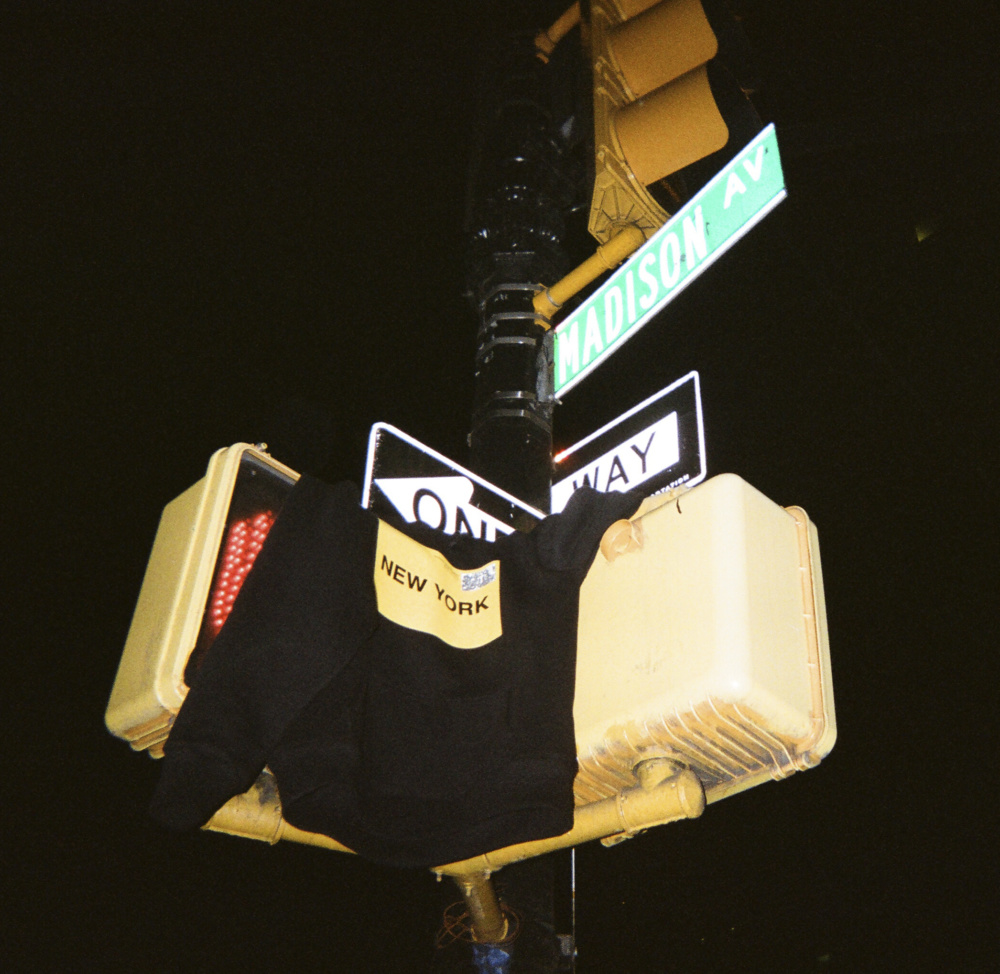
TOSONE: When you start a new collaboration, do you prioritize your needs and your aesthetic?
ANDRADE: I actually think it’s the opposite. I recognize like-minded people and talent that I may not have. I see where their strengths are and if it’s something that feels good, I let them do their thing. If I think your shit’s fresh, like, I will either hunt you down to sell it at my shop or if it’s within the dialogue of the 424 collection, I’m going to ask you to do something for it, let’s put you in 50 shops. I want to do that for people. And I’ve never been afraid of taking risks. I do what I like. If I won’t wear it, we’re not selling it. So that’s the barometer. That’s how I choose brands for my shop and that’s how I decide who I want to collaborate with.
TOSONE: Supporting emerging talent is so important.
ANDRADE: It’s also just more fun. That’s really my M.O. because I’m not a fashion person. I turned into one. I’m a habitual big brother, so I like to collect as many people in my life as possible, especially if they’re talented.
TOSONE: There are so many streetwear brands now. How do you not get lost in what everyone else is trying to do?
ANDRADE: You do get lost in it. I think you have to constantly remind yourself like, “That’s my shit” and block out any of that noise. It’s no different than when you watch TV and the commercials are always so much louder than the regular show. I started my brand from a place of just really loving what I do. I genuinely care about it so it’s easy for me to be passionate about it. Someone said something the other day that I thought was really funny: “Kids don’t start bands anymore; they start brands.” It really fucking stuck with me. For me, the more the merrier It’s inevitable—what’s good will always fucking stand out.
TOSONE: How would you describe the streetwear scene in L.A. right now?
ANDRADE: Well, when I first came to L.A. it was the unrelenting rule of skate culture. They’re making all the money. I mean the energy was only around that. If someone wore Rick Owens on Fairfax, people were like, “What the fuck?” There’s a lot more culture now to go around and you can pull from so many different places and if the meeting point is L.A. then even better. It’s really turned into a totally different environment where I don’t get hate mail for $100 T-shirts anymore [laughs].
TOSONE: Speaking of $100 T-shirts, how do you feel about the term “affordable luxury”?
ANDRADE: I mean the term affordable is relative [laughs]. My stuff, my price reflects the process. There’s no other way to say it. If you want me to make stuff in China, I can sell you a cheaper product. If you want me to support our community in L.A., create jobs at home and develop our strength here at home, this is what it costs to do that. It’s just super simple. I want to make shit in L.A. because I like making it in L.A. If I can strike a nerve and make product in L.A. and have it go outwards, the attention comes back home. I wish I could make stuff that was more affordable that was at the price point where it feels like luxury and it actually is luxury, because it’s a really hard line to walk. So luxury … you know what? I think a $100 T-shirt is pretty fucking luxurious.

